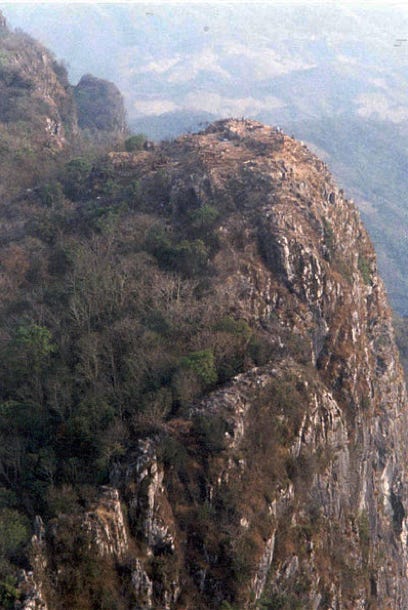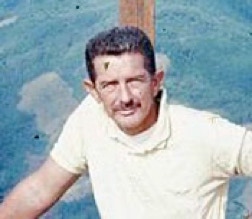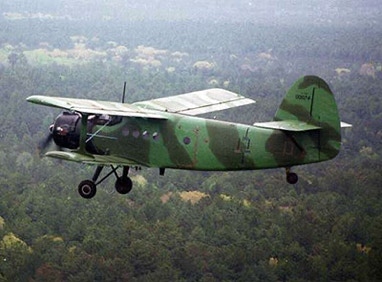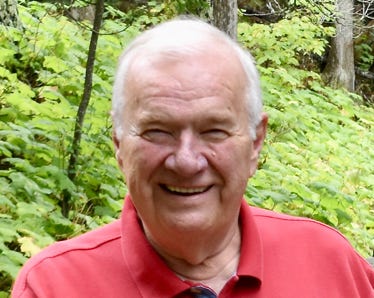DUTY, HONOR, COURAGE, RESILIANCE
Talking Proud: Service & Sacrifice

Lima Site 85, Laos: Exceptional Courage Against Impossible Odds
A growing threat to LS-85
Billy G. Webb, in his book, Secret War, gave an “atta boy” to then Major Richard Secord, saying,
"As months passed and CIA agents departed, Secord became practically a one-man show, coordinating air activities over Laos with the 7/13th Air Force (at Udorn). He was considered to be a tenacious and pugnacious individual. One thing was always apparent to those who dealt with Captain (later Major) Secord, and that was that he always kept the best interests of the troops on the ground as his first priority, and foremost in his thoughts and deeds."
In his book Honored and Betrayed,” Secord highlighted how his concerns with site security were growing,
"To be cautious, we assumed that even if the enemy didn't figure out the site's function, all our activity, helo flights and construction and the presence of significantly more personnel in the area, would tip the NVA off that something big was going on, and they might try to neutralize the site on that basis alone. Therefore, one of the first things I did was to formally request through channels a unit of the US Army Special Forces (even a squad would do) to guard the site. That meant going through the embassy in Vientiane, which meant a run-in with Ambassador William Sullivan … Sullivan rejected out of hand our request for even a tiny contingent of SF (Special Forces) troops to reinforce Site 85. He believed that if Washington wanted Special Forces to get in the act, it would have said so in directives, which it had not.
"With the ambassador intransigent about using American ground forces to defend Site 85, I could see no way to hold it in the face of even a moderately determined NVA assault."
Then Secord highlighted the next shoe to drop: The NVA is building a road, pointed at us!
"A second piece of bad news came to us in November (1967) in the form of throwaway data, something so minor that it is often overlooked even by diligent analysts. Aerial photos showed what looked like a 'trace,' or the beginning of a mechanically cleared path, no wider than a goat trail, in the jungle about 25 miles from Site 85 at a place where several skirmishes had already taken place between NVA and Meo (Hmong) patrols.
"I immediately arranged for a FAC and CIA photo reconnaissance aircraft to take a closer look. The resulting evidence plainly showed that North Vietnamese workers were clearing brush and leveling terrain in an attempt to build a motorable road in the direction of Phou Pha Thi, a dagger aimed at the heart of Site 85. If it was allowed to get within 15 kilometers (nine miles) of the installation by the time the dry season commenced next spring (1968), artillery could be brought up to blast the facility off the map. If they wanted to absorb the losses necessary to occupy the mountain, the enemy could use the road to bring up men, supplies, and munitions needed for a large-scale infantry assault. Either way, we believed, the key to preserving the site was to stop the road in its tracks."
The Americans labeled the road Route 602. Secord went on:
"Once the construction of Route 602 was discovered, Ted Shackley directed me to 'stop the road.' And that's just what we tried to do.
"Naturally, I requested 7th Air Force support as soon as we spotted the road. Our goal was to whack 'em hard whenever they cranked up a tractor, to obliterate the construction in the early stages, and make it crystal clear that we would simply not tolerate a road in the area. Since the NVA was basically a 'road-bound' army with no aerial support, this would preclude any movement of heavy artillery to the site and basically end the battle before it could start. However, the response from 7th Air Force was underwhelming. 'I'm sorry, Mr. Secord, we have higher-priority targets,' the strike coordinator told me--not once, but several times. I finally replied, 'You cannot expect us to hold this site unless you give us sufficient tac air to prevent the completion of the road!' 'Well, Mr Secord, what would you have us do--assign a whole wing to your operation?' 'If necessary, yes sir!' 'For the duration of the war? '''If that's what it takes, you're right!' 'Well, I'm sorry, we just have higher-priority targets.'”
Ken Conboy, writing The Earwan War, Vol. 1, said, the NVA road construction crews were furiously clearing a path from the Sam Neua provincial capital toward the ridge.
Conboy continued,
“With PAVN bulldozers and 400 laborers running a marathon
construction effort to extend Route 602 to Phou Phathi’s doorstep,
the USAF during mid-February responded with more tactical air
support.”
Bill Lair and Secord sounded the klaxon. Jane Hamilton-Merritt, in her book Tragic Mountains: The Hmong, the Americans and the Secret War In Laos, underscored the issue with 7th AF and LS-85 security,
"Washington's response was that for each day Site 85 operated, it saved lots of Americans lives. So it should operate for as long as possible."
Keep this Washington response in mind. It bears on the question of why the site was not evacuated.
Hamilton-Merritt quoted Secord after viewing the road’s progress from the mountaintop,
“Everything was proceeding as normal in the North Vietnamese ant-like way. They are very methodical. They are easy to fight for that reason, if you have the goods to fight them.”
Billy Webb added,
"But the road's progress did not alarm many of the American leaders, because it was assumed the airmen manning the site could be evacuated and the radar destroyed should an attack take place. Ambassador Sullivan also believed it, although he didn't feel comfortable with a radar navigation on the summit of Pha Thi."
Secord then went to 7th/13th AF and asked to draw 40 M-16s and ammunition from USAF stock. He had earlier asked the embassy to arm the men and was rebuffed. General Lindley approved the request on a hand receipt. The M-16s from 7th/13th AF, Browning 9 mm side arms, a large stock of ammunition, and M-1 grenades held by the CIA were handed out to the technicians. Secord did not inform the embassy.
SSgt. William “Willie” Husband, USAF, a diesel generator mechanic at LS-85, has said the operators were not supposed to have weapons but acknowledged that CIA people at the site gave them M-16s for their safety and protection. He said,
"I guess they felt sorry for us or something. One day, the rifles were there; some of us knew how to use them, and some didn't."
Husband said CMSgt. Richard Etchberger and MSgt. James Calfee helped to train the men on how to use the M-16.
On January 12, 1968, a bizarre event occurred. As shown here, the NVA launched An-2 Colt biplanes to attack the site. Two An-2s dove on the site and made three passes, employing rockets and machine-gun fire. They also dropped several bombs.
Capt. Sliz commented on the An-2s,
"On the 12th of January, two biplanes attacked us. They were dropping grenades and mortar shells; a Thai captain was shooting at them and hit one of them just as he released a salvo of rockets. This saved us because the plane jerked up, and the rockets went over our heads. That aircraft staggered off and crashed. The other biplane was shot down with an AK-47 by an Air America chopper who flew alongside so the crew chief could shoot at it. The most significant thing that came out of that incident was that they gave us a couple of survival vests, the kind that pilots wear when they fly; there's a little radio in them, as well as flares and other survival equipment. We were also issued 10 M-16s along with a case of ammo.”
The damage to the equipment and buildings was minor. The TACAN building was hit and was offline for a few days. No Americans were killed, though one CIA member was wounded. Four Hmong civilians, including two women, were killed, and two Hmong soldiers were wounded.
In a January 14, 1968 message to the State Department, the embassy said this:
"We can conclude that aerial attack represented enemy effort to get at navigation facility which could be reached on ground only at heavy cost. Theoretically, the enemy could resort to this technique again at Site 85 or elsewhere. However, it should be noted that this attack was largely unsuccessful, and two aircraft were lost.
"On basis of available information we regard aerial raid as highly unusual variation in normal pattern of enemy tactics and do not believe this one incident necessarily introduces new dimension to war in Laos....we are presently reviewing questions of air defense at Site 85...."
While on the surface, the attack appears to be a trivial attempt, it did convey one salient point. The NVA was aware of the site, had at least a sense of its mission, and was serious about putting it out of commission.
Major Secord and others were astonished at the An-2 attack. Webb noted, "Suddenly everyone back at the embassy in Vientiane realized the vulnerability of the radar site at Phou Pha Thi" and, as a result, stationed a USAF combat air controller there. Webb said the lead An-2 pilot had contacted an NVA Dac Cong sapper team hidden at the mountain's base. That team, according to Webb, "used its radio to visually guide the aircraft to drop mortars on the mountain."
If correct, that means the sappers were there on January 12, 1968, perhaps for this reason.
Click to zoom graphic-photo



